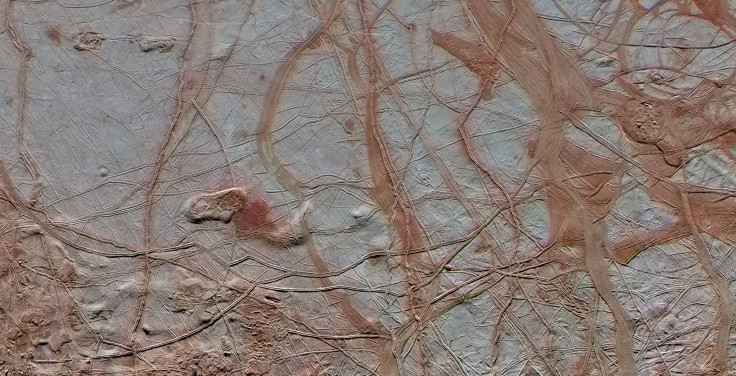Jupiter’s Moon Europa More Earth-Like Than Previously Believed, Has All The Ingredients For Life

Jupiter’s moon Europa is perhaps one of the most promising candidates in the hunt for extraterrestrial life. Observations have indicated that the moon has a salty, subsurface ocean, and, as our experience on Earth has shown, where there is water, there is life.
Now, a new study, published Tuesday in the journal Geophysical Research Letters, suggests that Europa’s subsurface ocean, protected from harsh space radiation by its thick icy crust, may be more Earth-like than previously believed. The study, which modeled conditions in the oceans of the Jovian moon and examined its chemical composition, found that the ratio of oxygen and Hydrogen on Earth and Europa are similar.
On both worlds, oxygen production is believed to be about ten times higher than hydrogen production, suggesting that Europa’s rocky interior may be much more complex than people believe.
“We're studying an alien ocean using methods developed to understand the movement of energy and nutrients in Earth's own systems,” Steve Vance, a planetary scientist at NASA’s Jet Propulsion Laboratory, said in a statement. “The cycling of oxygen and hydrogen in Europa’s ocean will be a major driver for Europa’s ocean chemistry and any life there, just as it is on Earth.”
Europa is believed to have a rocky core riven by several deep fractures. For the purpose of this study, researchers considered how cracks in Europa’s seafloor open up over time, as the moon's rocky interior continues to cool.
Even if the moon does not have any volcanic hydrothermal activity, hydrogen could still potentially be produced in Europa's ocean as seawater reacts with rock through a process called serpentinization, wherein water seeps into cracks and reacts with the cold, easily fractured rock to form new minerals, releasing hydrogen in the process.
“The other half of Europa's chemical-energy-for-life equation would be provided by oxidants — oxygen and other compounds that could react with the hydrogen — being cycled into the Europan ocean from the icy surface above,” NASA said in the statement. “Europa is bathed in radiation from Jupiter, which splits apart water ice molecules to create these materials. Scientists have inferred that Europa's surface is being cycled back into its interior, which could carry oxidants into the ocean.”
The study adds to the growing body of evidence that suggests that Europa has all the ingredients needed for the creation of life. Further evidence is likely to be gathered when NASA sends a spacecraft to explore the moon in the coming decade. The spacecraft would be locked in an elliptical orbit around the planet itself, occasionally dipping in close to investigate Europa in brief visits during which it would snap several high-resolution images of its icy surface.
© Copyright IBTimes 2024. All rights reserved.





















